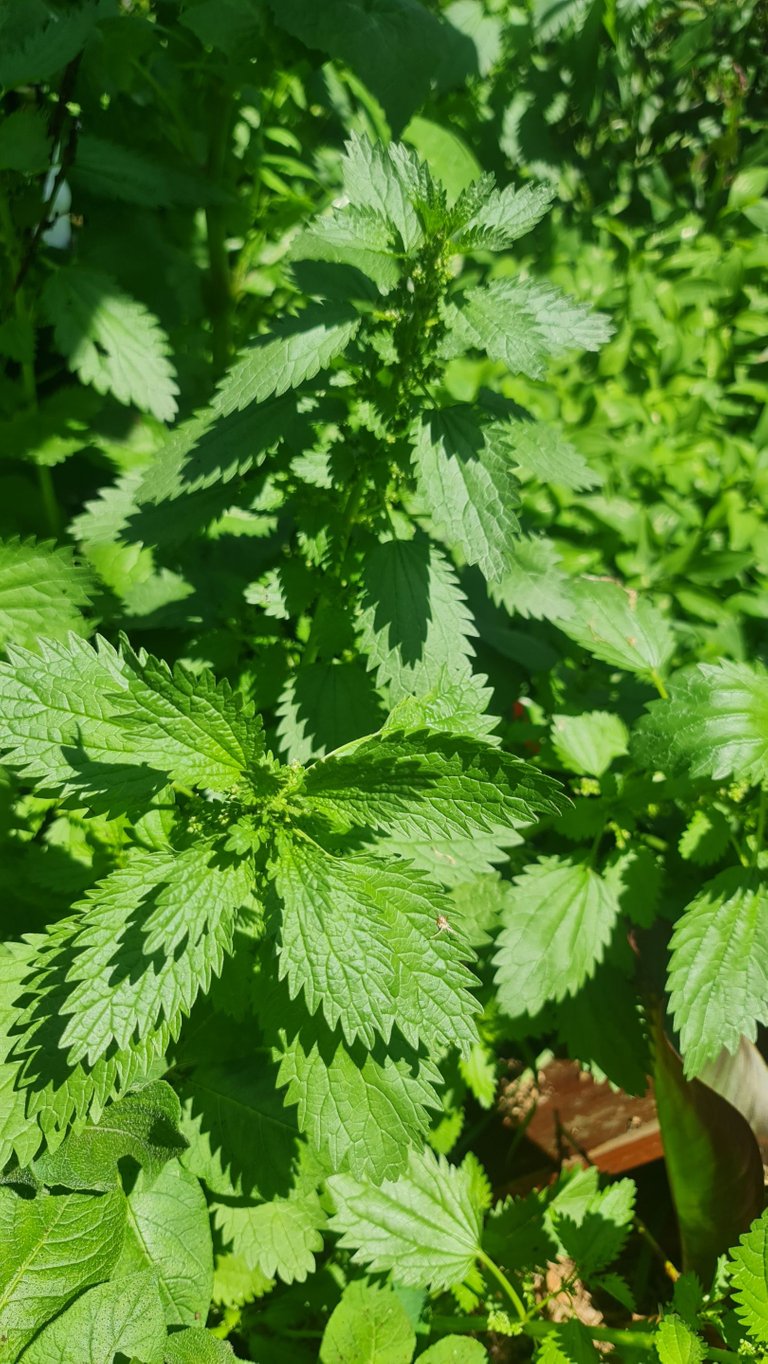

The two pictures above represent an interesting choice, plus the opportunity to develop some understanding of the world around us. The simple question of this post's title is, of course a trick one.
The plant that we see is a Stinging Nettle, the annual one, Urtica urens, that grows profusely here at this time of year. Many people consider it a weed and it has a well deserved reputation for being a real pain literally and figuratively!
The thing is, though, it's one of our most useful plants. It is very very nutritious to people and non people, many minerals, protein and all kinds of stuff that are deficient in our modern diets. It also has a built-in anti-histamine.
Nettle grows in nitrogen rich areas and helps to absorb and remove that extra nitrogen from the soil so that soil critters can live just the way that they like.
Both a fibre and a dye an be made from it and the list of benefits goes on and on. So, we'd definitely choose that over a butterfly, right?
The butterfly is a Yellow Admiral (Vanessa itea), one of many that brighten the garden at this time of year. Myself, I prefer them to the Monarchs (Danaus plexippus plexippus) that infatuate so many people. as it goes about its daily rounds, a Yellow Admiral pollinates many flowers - I've seen one on nearly all of our flower varieties here in the garden.
Now here's the thing, the trick in the trick question. We wouldn't have Yellow Admirals if it wasn't for Nettles. They lay their eggs on them and related species of the Family 'Urticaceae' (many of which are 'weeds') and their caterpillars love to eat their super nutritious homes, reducing their vigour and thus reducing the potency of their seeds.
I'm happy to have both. The Yellow Admirals come in toward the end of Nettle season, after I've harvested more than enough for medicine, food and fertilizer. They control the Nettles so that their numbers don't get out of control next year. Knowing that reduces my garden labour because I don't have to pull out the excess Nettles - there'll be eggs in them containing next year's butterflies.
It's a natural balance and knowing about the benefits of both and how they represent two parts a cycle of life that plays out in our gardens helps us see that there are no real pests, that everything has its time and things are under control.
That understanding helps me get through my days in these times of global weirding when so many of our usual touchstones of reality are shifting under our feet. Yellow Admirals will continue to lay eggs on Nettles and their eggs will hatch and their offspring eat them for many years to come.













